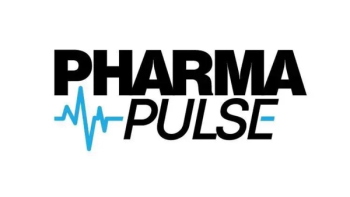Three Key Takeaways
1. Five-step repurposing process: The study outlined a five-stage process: enabling, identifying, validating, testing, and implementing repurposed drugs.
2. RDNPs drive success: Nonprofit involvement, especially in patient recruitment, was linked to successful repurposing outcomes, including FDA approvals and off-label use.
3. New DDDR Framework: Researchers proposed a data-driven drug repurposing (DDDR) framework to guide and improve future rare disease repurposing efforts.
In the United States, over 10,000 rare diseases affect 30,000,000 people.1,2 Despite these numbers, 95% of those rare diseases currently do not have an (FDA)-approved therapy,3 which could be attributed to challenges faced by researches and the drug development sector.
As a way to combat these hurdles, drug repurposing involves finding new ways to utilize drugs that have already been approved. Biologically speaking, many diseases are believed to share overlapping mechanisms, allowing for the possibility of treatment with the same drug.
At the forefront of these efforts have been rare disease nonprofit organizations (RDNPs) who, alongside academic researchers and companies, have been striving to repurpose for decades.4-6
Given RDNPs’ experience in this department, a qualitative study published in JAMA Network Open7 sought to determine the main themes involved with these repurposing efforts, while also bringing the factors connected with successful projects to light.
Study Design
The study utilized a mixed-methods analysis consisting of both RNNP leaders and stakeholders in the space. These participants were sent an electronic, US-based survey between Sept. 29, 2021 and Jan. 6, 2022, and also took part in interviews.
Overall, 147 individuals participated in the Repurposing of All Drugs, Mapping All Paths (ROADMAP) study (named for the webtool)—including 25 interviews— and the data were examined from Jan. 22, 2024 to April 23, 2024.
Results showed that five chronologic themes dug into the stages of repurposing, including enabling drug repurposing; identifying a drug therapy; validating a drug therapy; clinical use and testing; and reaching an optimal end point for clinical practice. Recommendations were also pulled from interviews, while various factors were connected to successful outcomes, including non-profit supported patient recruitment for trials.
The median RDNP age was 10 years (interquartile range or IQR, 5-20 years), and the median annual revenue was $355,390 (IQR, $90,028-$946, 108). Among 34 leaders who were interviewed, representing 25 RDNPs, 23 were female (67.6%), and the RDNPs had a median age of 15 years (IQR, 6-19 years) and a median revenue of $670,719 (IQR, $193,587-$1,830,890).
Among the surveyed RDNPs, 58 of 138 of them (42.0%) noted their involvement in repurposing supported repurposing projects, and 94 drugs were in various stages of repurposing, with 23 of them meeting success criteria (five with FDA approval and 18 with off-label use with benefit).
As a result, the study investigators concluded that “the findings of this qualitative study, which included a mixed-methods analysis of RDNP repurposing, suggest that several factors of RDNP-supported repurposing were associated with successful outcomes. The study provided a DDDR [data-driven drug repurposing] framework to facilitate RDNP repurposing and proposes several actionable changes to optimize repurposing for external collaborators, policymakers, and RDNPs.”
References
1. Haendel M, Vasilevsky N, Unni D, et al. How many rare diseases are there? Nat Rev Drug Discov. 2020;19(2):77-78.
2. Orphan Drug Act of 1983. HR 5238, 97th Congress (1981-1983). Accessed January 15, 2025. https://www.fda.gov/media/99546/download
3. Fermaglich LJ, Miller KL. A comprehensive study of the rare diseases and conditions targeted by orphan drug designations and approvals over the forty years of the Orphan Drug Act. Orphanet J Rare Dis. 2023;18(1):163. doi:10.1186/s13023-023-02790-7
4. Davies EH, Fulton E, Brook D, Hughes DA. Affordable orphan drugs: a role for not-for-profit organizations. Br J Clin Pharmacol. 2017;83(7):1595-1601. doi:10.1111/bcp.13240
5. van den Berg S, de Visser S, Leufkens HGM, Hollak CEM. Drug repurposing for rare diseases: a role for academia. Front Pharmacol. 2021;12:746987. doi:10.3389/fphar.2021.746987
6. Kesselheim AS, Tan YT, Avorn J. The roles of academia, rare diseases, and repurposing in the development of the most transformative drugs. Health Aff (Millwood). 2015;34(2):286-293. doi:10.1377/hlthaff.2014.1038
7. Nijim S, Korsunska A, Zinski J, et al. Rare Disease Drug Repurposing. JAMA Netw Open. 2025;8(5):e258330. doi:10.1001/jamanetworkopen.2025.8330






